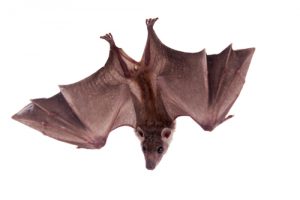Sealing Out Bats – Advice From the Pros
By Chris Williams on September 2, 2011.
If you are sharing your home with bats, it’s important that they be removed in a humane manner. Bats are beneficial as insect predators and are protected by law. But bats or their droppings can carry a number of diseases, including rabies, that can affect humans.
People usually discover that they have bats living in their home when they hear strange noises in wall voids or attics. Or, you may see bats leaving or returning to the roof or siding area of your home. Bats like areas that are warm, dark, and quiet and will often end up in attics or wall voids, behind shutters, or in the gable vents on the warmer, south-facing side of the building.
 Sealing of bat entry points cannot be done during summer months while there are young in the nest because they will starve and die if mom can’t get back to the roost. Early fall is a good time for bat-proofing your home.
Sealing of bat entry points cannot be done during summer months while there are young in the nest because they will starve and die if mom can’t get back to the roost. Early fall is a good time for bat-proofing your home.
In late summer/early fall, bats have reared their young and are thinking about how they are going to spend the winter. Some bats will leave the area (and your home), but others will hibernate where they are or in a new roost (your home?) in the same area. It’s important to make sure all bats are out of your home before you attempt to seal openings to keep them out. You don’t want to seal them in. One way to get them out is to use the professional and humane bat exclusion procedure offered by Colonial Pest Control.
We have both the big brown bat and the little brown bat in our area. The big brown bat is about 5 inches long with a wingspan over 13 inches. The little brown bat is about half that size at 3 inches long with a wingspan of 10 inches. While both bats nest in tree cavities, rocks, caves, and buildings, the big brown bat seems to prefer manmade structures. In fact, it likes structures so much that it will spend the winter inside buildings in our area, instead of migrating. The little brown bat, on the other hand, migrates south in early fall seeking caves where it will spend up to 7 months in hibernation. In the spring, it often returns to the same roosting site it used the previous year.
 At Colonial, our bat control program has two parts: removal and exclusion (keeping them out). We install bat excluders on the primary entry points that the bats are using. These one-way tubes let the bats leave the space but they cannot find their way back in. The excluders are left in place for weeks before we finally seal the primary openings. During that time, we begin bat-proofing your home, permanently sealing all secondary openings that bats can use to get inside. Once we’ve verified that all of the bats are gone, we complete the exclusion job, certifying that your home will remain bat-free for years to come.
At Colonial, our bat control program has two parts: removal and exclusion (keeping them out). We install bat excluders on the primary entry points that the bats are using. These one-way tubes let the bats leave the space but they cannot find their way back in. The excluders are left in place for weeks before we finally seal the primary openings. During that time, we begin bat-proofing your home, permanently sealing all secondary openings that bats can use to get inside. Once we’ve verified that all of the bats are gone, we complete the exclusion job, certifying that your home will remain bat-free for years to come.
We’ve been doing bat removal and exclusion since 1984…and we’re good at it! So good, that we can offer you a seven year warranty. Find out more about our humane bat removal and release, and our bat-proofing procedures on our Bat Removal Service page. For more information on the two common bats in our area, the little brown bat and the big brown bat, look under Nuisance Wildlife in our Pest Library.